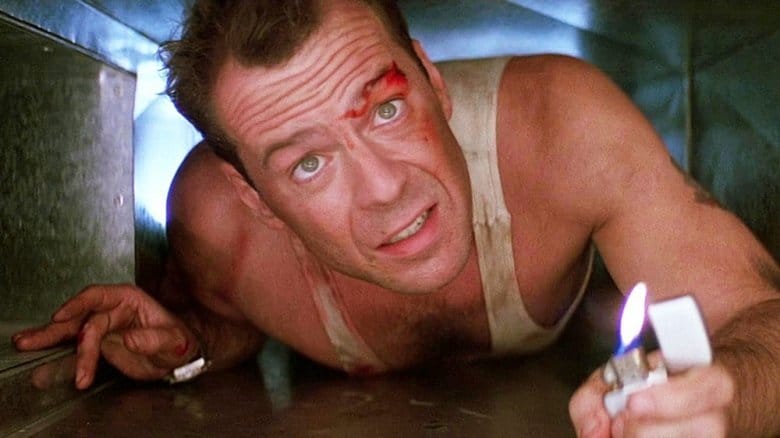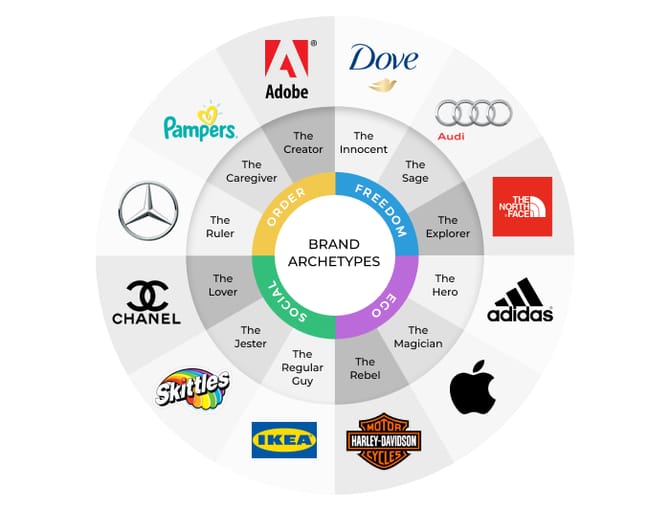
Brand voice is beginning to feel like a lost art. Wendy’s kicked down the door years ago with their Twitter roasting and it’s never been the same. You’ve got WingStop tweeting f***, McDonald’s calling their fans besties, and RadioShack saying… well, click this link at your own risk.
Not every brand should use Gen Z internet speak—lowercase, no punctuation, abbreviation, cheugy, etc. Just like there are so many different types of companies—think: B2C versus B2B—there are also many different voices brands can take on. Here are two different ways we can define “brand voice.” Reply telling me where your brand falls.
Celebrity Lookalike
The most fun and easiest way to give your brand a voice: Figure out which celebrity or fictional character voice is the right fit, then slap their face on a slide with descriptive adjectives.
I grabbed that tactic as a young social strategist at Ayzenberg Group, my first ad agency, building my second ever content strategy. Quite a fun project, too—Dying Light, a zombie video game from Techland where you parkour your way through the wasteland, surviving and scavenging until the more vicious zombies came out at night. Good balance of action-adventure and hack and slash.

I was working through who best represents the game and told my boss I was a bit stumped.
She excitedly shouted, “Use John McClane!”
“Who?”
“Jack. Go back to your desk and watch Die Hard. You can expense it.”
She was very right. When the clients came in from Poland to review, I got the smiles and nods as soon as the slide came on screen. No notes, sold through, and I yippie-kay-yayed my way through social for the full campaign.
To find your brand’s celebrity, work through:
What celebrities or characters does your target audience enjoy?
What about those celebrities feels right? Be specific with adjectives.
Would that celebrity actually use the product?
Is the character well-known enough that people immediately know the vibe?
You’ll wanna toss that face on a slide alongside some bullet points to their defining personality traits. Pleasepleaseplease don’t use jargon—write like a human being. Use common adjectives and anecdotes. This isn’t hard science—feel free to wax poetic.
That’s the best part about the celeb brand-voice exercise: accessibility. You’ll get immediate nods from bosses and clients if you nail it, and it provides wiggle room for creative freedom.
What would Jung do?
Oddly enough, I picked this one up at that same agency. We hired a VP with more traditional brand experience who brought in new exercises our social-first agency had never seen, namely brand archetypes.
It’s an evolution of Swiss psychologist Carl Jung’s personality archetypes from the 1940s. The basic idea: the whole human race can loosely fit into a set of defined roles/styles based on our collective unconsciousness. Eventually brand folk like us co-opted the thinking into 12 brand archetypes:
The Hero: Nike, maybe FedEx
The Magician: Disney or Dyson
The Outlaw: Harley-Davidson or Red Bull
The Explorer: North Face or NASA
The Sage: fits Discovery Channel, BBC, Ted Talks
The Innocent: Dove or Coca-Cola
The Creator: Think Apple, Lego, GoPro
The Ruler: like Hugo Boss, Microsoft
The Caregiver: Johnson & Johnson, UNICEF
The Everyman: Ikea or Ford
The Jester: where Old Spice and M&Ms thrive
The Lover: Victoria’s Secret or Godiva
You’ll notice the archetypes seem to progress and have a relationship with each other—that’s because they’re on a wheel, emanating from four central emotions. I like OptiMonk’s visualization:

So many social brands immediately lean Jester, but there are so many ways to entertain, educate, and provide value to customers without the caps ’n bells. Give The Hero and the Outlaw a read—it’s War and Peace dense, but probably the most educational book about branding I’ve read.
To run your own archetypes exercise, follow these steps:
Define why your brand exists—who are you to your customers?
Establish your core values. They’ll naturally lead towards an archetype.
Pick three archetypes to pass the eyeball test, then pro/con them against each other.
I think about these exercises for this newsletter + my personal social presence. You might think I’d slot myself as The Creator since I write about creators + work as a creator, but curiosity is what drives me. I want you to feel my excitement for discovery in Future Social—that’s why I fancy it an Explorer brand.
Whereas the celebrity process’s greatest strength comes from immediate understanding, the brand-archetype exercise’s salesmanship is in thoroughness. I could tell my clients were both interested in the process itself and the result, often asking me additional questions about other brands—it’s interesting! When you have a tool or process you can explain, it makes you feel more pro.
Take whichever is best for you. I recommend learning both, as they’ve got different situations they can bring value to.
